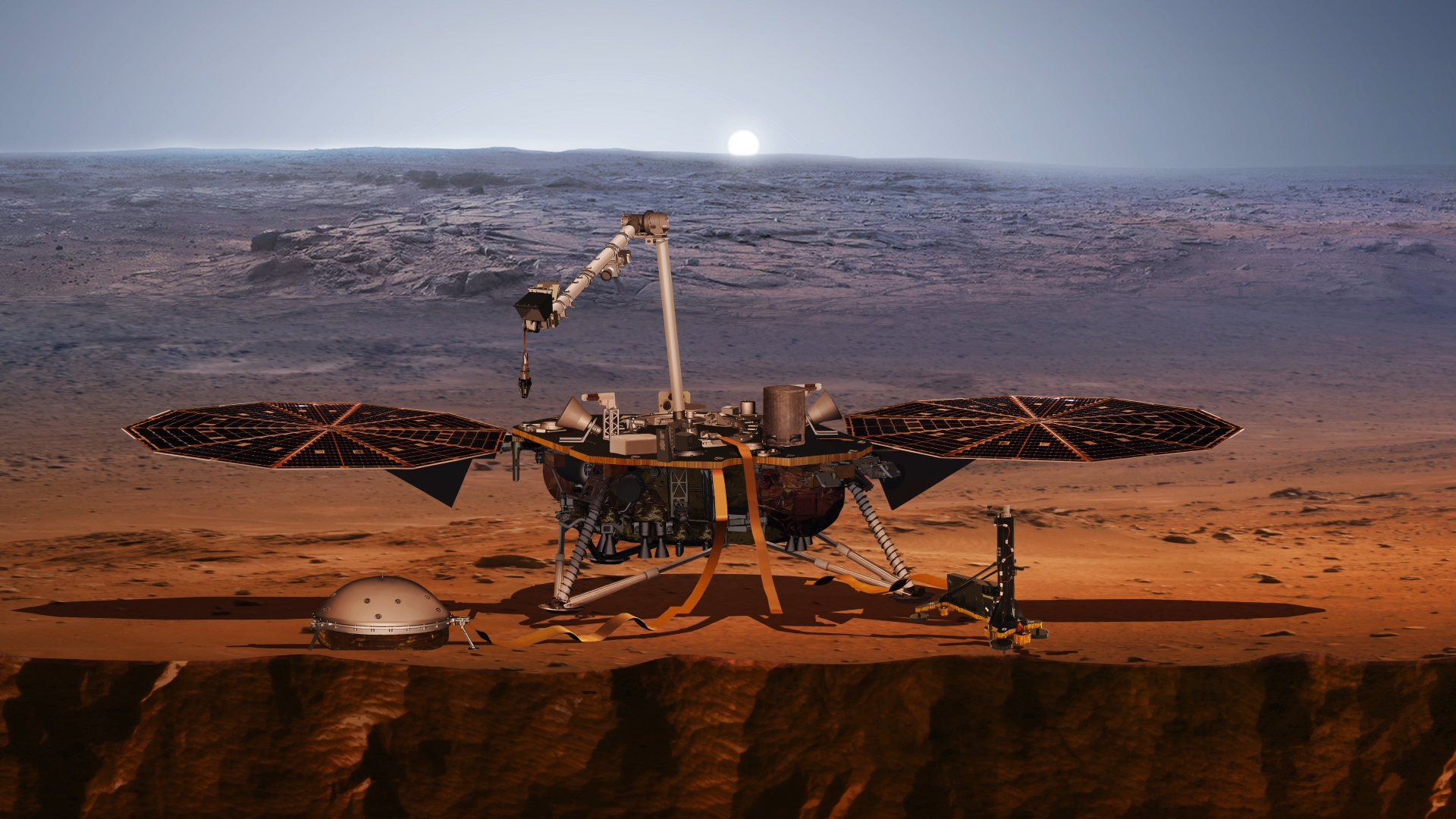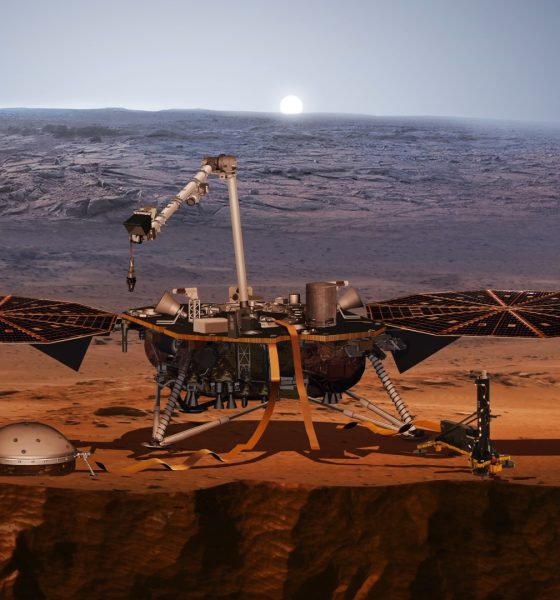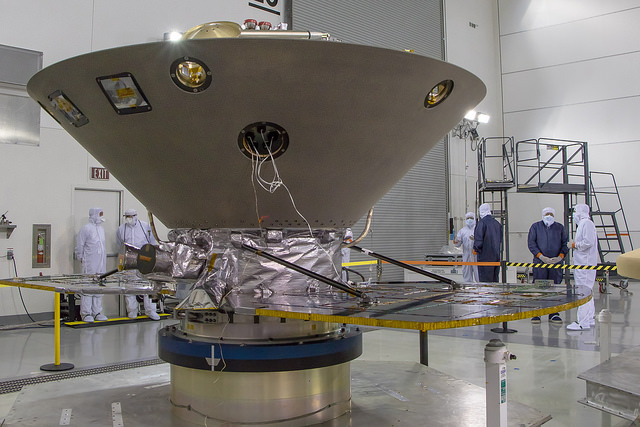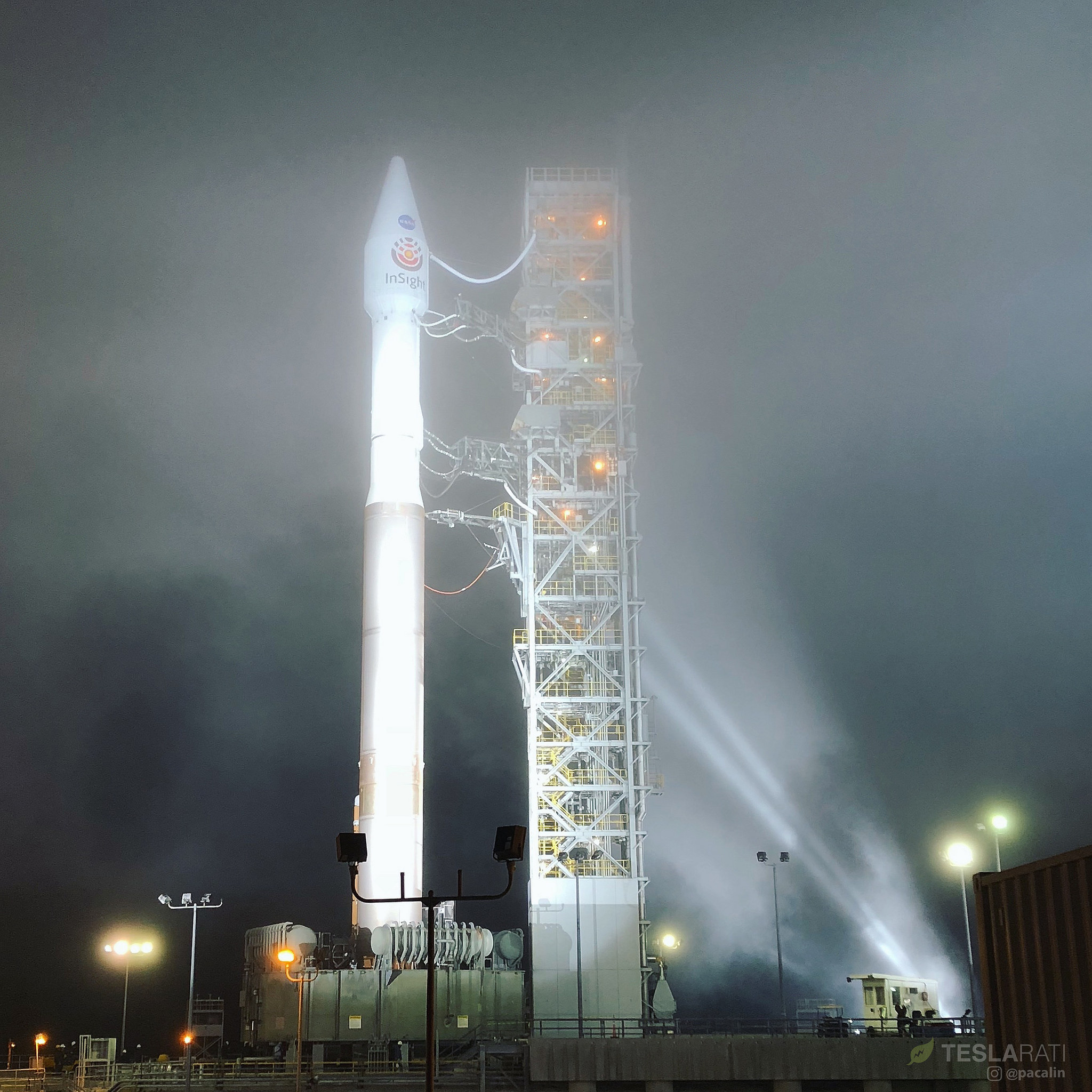

News
NASA to livestream first Mars landing in six years on November 26 with InSight lander
On Monday, November 26, 2018, a Mars lander will arrive on the surface of the red planet for the first time in six years, and NASA will broadcast the event live on their TV channel and website. The craft’s name is “InSight”, and it’s scheduled to complete its journey begun May 5, 2018 on an Atlas V rocket by setting down onto Martian regolith at approximately 3 pm EST. A video stream of Mission Control at the Jet Propulsion Laboratory in California will be available where viewers can listen to live landing commentary. InSight’s descent itself will not have a video component; however, photographs of the craft while parachuting and shortly after landing may be transmitted.
Truly enjoyed the experience of my first AtlasV launch, and all the excitement surrounding this incredible mission! Rather surprised my remote cams survived AND managed to capture *anything* in that totally rude fog. 🙂 Here are a couple shots. @NASAInSight @ulalaunch pic.twitter.com/XEH4zBLWpu
— Pauline Acalin (@w00ki33) May 5, 2018
InSight’s name is short for “Interior Exploration using Seismic Investigations, Geodesy and Heat Transport”, and as the name implies, its mission is to collect seismographic data from the surface of Mars in order to gather information about the planet’s core. The lander has six instruments on board that will propogate seismic waves through Mars’s interior after hammering a probe about 10-16 feet into the ground, a process which will take about 2-3 months to complete. The vibrations measured at the surface will then be measured and interpreted to reveal details about its layers and, by extension, the early formation of both it and Earth.
Unlike a rocket launch where delays are always possible, you can safely mark your calendar for this event. NASA can’t change this date even if they wanted to thanks to the physics involved in the lander’s interplanetary flight. If you’re interested in celebrating InSight’s Martian arrival in a community setting, watch parties open to the public are planned at scientific facilities and libraries around the world.

InSight in a clean room at Vandenberg AFB in California. | Credit: Pauline Acalin
Viewers of the live streamed landing will hear updates from scientists as they track InSight’s journey from a fiery entry speed of 12,300 mph to a 5 mph landing speed. Drag against the craft’s heat shield, parachutes, and retrorockets will slow its descent. The mission’s scientists hope to receive an image of the Martian surface shortly after, but they’ve cautioned that the initial photos will likely be cloudy due to dust kicked up from the event.
InSight will land in Mars’s Elysium Planitia (“the biggest parking lot on Mars”), an area near the planet’s equator. Its closest Earth-sent neighbor, the Curiosity rover, will be 240 miles away, and twin rovers Spirit and Opportunity will be located 1,600 and 5,200 miles away, respectively. Once on the surface, InSight’s first steps will be to unpack and deploy its solar panels to ensure power for the rest of its instruments.
The solar panels will provide about 600-700 watts on a clear Martian day, 200-300 during dustier conditions. For more perspective on this power source, NASA’s press release likened its maximum wattage to the requirements of a household blender (500 watts). The amount of energy converted just falls short of running a coffee machine (1000 watts), but plenty to “wake up” the lander after sleep, even if not a human.

As a bonus for space fans, InSight did not set out on its interplanetary mission alone. Twin demonstration mini satellites named “Mars Cube One” (MarCO) launched with the lander and traveled separately to the planet. Along with having completed successful radio, antennae, steering, and propulsion tests during their journey, MarCo will test a new kind of data relay from Mars orbit during InSight’s descent to the surface. InSight will not depend on successful transmissions to and from MarCo to land.
MarCO also marks the first deep space mission for a type of tiny satellite called “CubeSats”, a class characterized by a small form factor and miniaturized technologies that are often commercial, off-the-shelf components. MarCO fits this category and each satellite is about the size of a briefcase. The significantly lower development and launch costs of CubeSats compared to larger satellites have already opened space science to students and limited budget commercial initiatives. The success of MarCO in the deep space environment will now potentially open up interplanetary exploration beyond government agencies to encompass more civilian initiatives.
Watch NASA’s video below to learn more about the lander:

News
Tesla FSD (Supervised) v14.2.2 starts rolling out
The update focuses on smoother real-world performance, better obstacle awareness, and precise end-of-trip routing, among other improvements.

Tesla has started rolling out Full Self-Driving (Supervised) v14.2.2, bringing further refinements to its most advanced driver-assist system. The new FSD update focuses on smoother real-world performance, better obstacle awareness, and precise end-of-trip routing, among other improvements.
Key FSD v14.2.2 improvements
As noted by Not a Tesla App, FSD v14.2.2 upgrades the vision encoder neural network with higher resolution features, enhancing detection of emergency vehicles, road obstacles, and human gestures. New Arrival Options let users select preferred drop-off styles, such as Parking Lot, Street, Driveway, Parking Garage, or Curbside, with the navigation pin automatically adjusting to the user’s ideal spot for precision.
Other additions include pulling over for emergency vehicles, real-time vision-based detours for blocked roads, improved gate and debris handling, and extreme Speed Profiles for customized driving styles. Reliability gains cover fault recovery, residue alerts on the windshield, and automatic narrow-field camera washing for new 2026 Model Y units.
FSD v14.2.2 also boosts unprotected turns, lane changes, cut-ins, and school bus scenarios, among other things. Tesla also noted that users’ FSD statistics will be saved under Controls > Autopilot, which should help drivers easily view how much they are using FSD in their daily drives.
Key FSD v14.2.2 release notes
Full Self-Driving (Supervised) v14.2.2 includes:
- Upgraded the neural network vision encoder, leveraging higher resolution features to further improve scenarios like handling emergency vehicles, obstacles on the road, and human gestures.
- Added Arrival Options for you to select where FSD should park: in a Parking Lot, on the Street, in a Driveway, in a Parking Garage, or at the Curbside.
- Added handling to pull over or yield for emergency vehicles (e.g. police cars, fire trucks, ambulances).
- Added navigation and routing into the vision-based neural network for real-time handling of blocked roads and detours.
- Added additional Speed Profile to further customize driving style preference.
- Improved handling for static and dynamic gates.
- Improved offsetting for road debris (e.g. tires, tree branches, boxes).
- Improve handling of several scenarios, including unprotected turns, lane changes, vehicle cut-ins, and school buses.
- Improved FSD’s ability to manage system faults and recover smoothly from degraded operation for enhanced reliability.
- Added alerting for residue build-up on interior windshield that may impact front camera visibility. If affected, visit Service for cleaning!
- Added automatic narrow field washing to provide rapid and efficient front camera self-cleaning, and optimize aerodynamics wash at higher vehicle speed.
- Camera visibility can lead to increased attention monitoring sensitivity.
Upcoming Improvements:
- Overall smoothness and sentience.
- Parking spot selection and parking quality.
News
Tesla is not sparing any expense in ensuring the Cybercab is safe
Images shared by the longtime watcher showed 16 Cybercab prototypes parked near Giga Texas’ dedicated crash test facility.

The Tesla Cybercab could very well be the safest taxi on the road when it is released and deployed for public use. This was, at least, hinted at by the intensive safety tests that Tesla seems to be putting the autonomous two-seater through at its Giga Texas crash test facility.
Intensive crash tests
As per recent images from longtime Giga Texas watcher and drone operator Joe Tegtmeyer, Tesla seems to be very busy crash testing Cybercab units. Images shared by the longtime watcher showed 16 Cybercab prototypes parked near Giga Texas’ dedicated crash test facility just before the holidays.
Tegtmeyer’s aerial photos showed the prototypes clustered outside the factory’s testing building. Some uncovered Cybercabs showed notable damage and one even had its airbags engaged. With Cybercab production expected to start in about 130 days, it appears that Tesla is very busy ensuring that its autonomous two-seater ends up becoming the safest taxi on public roads.
Prioritizing safety
With no human driver controls, the Cybercab demands exceptional active and passive safety systems to protect occupants in any scenario. Considering Tesla’s reputation, it is then understandable that the company seems to be sparing no expense in ensuring that the Cybercab is as safe as possible.
Tesla’s focus on safety was recently highlighted when the Cybertruck achieved a Top Safety Pick+ rating from the Insurance Institute for Highway Safety (IIHS). This was a notable victory for the Cybertruck as critics have long claimed that the vehicle will be one of, if not the, most unsafe truck on the road due to its appearance. The vehicle’s Top Safety Pick+ rating, if any, simply proved that Tesla never neglects to make its cars as safe as possible, and that definitely includes the Cybercab.
Elon Musk
Tesla’s Elon Musk gives timeframe for FSD’s release in UAE
Provided that Musk’s timeframe proves accurate, FSD would be able to start saturating the Middle East, starting with the UAE, next year.

Tesla CEO Elon Musk stated on Monday that Full Self-Driving (Supervised) could launch in the United Arab Emirates (UAE) as soon as January 2026.
Provided that Musk’s timeframe proves accurate, FSD would be able to start saturating the Middle East, starting with the UAE, next year.
Musk’s estimate
In a post on X, UAE-based political analyst Ahmed Sharif Al Amiri asked Musk when FSD would arrive in the country, quoting an earlier post where the CEO encouraged users to try out FSD for themselves. Musk responded directly to the analyst’s inquiry.
“Hopefully, next month,” Musk wrote. The exchange attracted a lot of attention, with numerous X users sharing their excitement at the idea of FSD being brought to a new country. FSD (Supervised), after all, would likely allow hands-off highway driving, urban navigation, and parking under driver oversight in traffic-heavy cities such as Dubai and Abu Dhabi.
Musk’s comments about FSD’s arrival in the UAE were posted following his visit to the Middle Eastern country. Over the weekend, images were shared online of Musk meeting with UAE Defense Minister, Deputy Prime Minister, and Dubai Crown Prince HH Sheikh Hamdan bin Mohammed. Musk also posted a supportive message about the country, posting “UAE rocks!” on X.
FSD recognition
FSD has been getting quite a lot of support from foreign media outlets. FSD (Supervised) earned high marks from Germany’s largest car magazine, Auto Bild, during a test in Berlin’s challenging urban environment. The demonstration highlighted the system’s ability to handle dense traffic, construction sites, pedestrian crossings, and narrow streets with smooth, confident decision-making.
Journalist Robin Hornig was particularly struck by FSD’s superior perception and tireless attention, stating: “Tesla FSD Supervised sees more than I do. It doesn’t get distracted and never gets tired. I like to think I’m a good driver, but I can’t match this system’s all-around vision. It’s at its best when both work together: my experience and the Tesla’s constant attention.” Only one intervention was needed when the system misread a route, showcasing its maturity while relying on vision-only sensors and over-the-air learning.








